On September 8, 2010, ground was broken for one of my gardening dreams - a greenhouse.
Mom and I had been talking about it for some time. She would like to have had one too, as most gardeners do, but for some reason or another, it didn't happen. Through a series of events, some discussion, and the moon being in the seventh house, the talking turned into action.
The first consideration was that of location. Even though we live on an acre, there was no real obvious place to put the greenhouse. I wanted it to be where it was convenient, which pretty much left out the back third of the property, around the majority of the gardens. When the winter winds are howling and the temperatures are hovering around zero (F), the last thing I want to do is walk a great distance to get to the greenhouse. The rest of the property has many trees.
In the end, we decided to attach it to the south side of the pool house. It was a solid wall (no doors or windows) and nothing was in the way of a 10' x 12' addition except for my Japanese Garden. Though I cringed at the thought of moving most of the plants in that space, it wasn't an impossibility, so on August 30th, we began the task of digging up plants and removing a scraggly-looking small tree.
Since the vegetable garden was pretty well finished for the year, I put the plants I dug up in that part of the garden, where they'll stay until next spring. I'll decide what to do with them then. In all, we moved:
8 Red hot pokers (Kniphofia)
1 Tree peony (Paeonia suffruticosa)
1 Dwarf Mugo pine (Pinus mugo)
1 clump of wild Live-forever (Hylotelephium telephioides)
1 hybrid tea rose 'Memorial Day'
3 Japanese Anemones (Anemone 'Party Dress' and 2 NOID)
1 zebra grass (Miscanthus sinensis)
3+ Yuccas
We removed a ratty looking weeping juniper tree. It never looked the best, although it did have that aged character and there's a certain beauty in that, I suppose. I don't think we'll miss it, however.
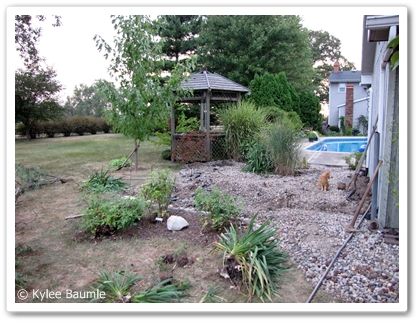 |
| Removing plants to be relocated to the vegetable garden |
 |
| Though the oak tree will be close to the conservatory, it will be devoid of leaves in the winter and provide a bit of shade in the summer. |
The hardest things to remove were the yuccas and the red hot pokers. The yuccas are nearly indestructible and the red hot pokers have roots like octopus tentacles. With our summer drought and the clay soil, it was exhausting, getting those things out.
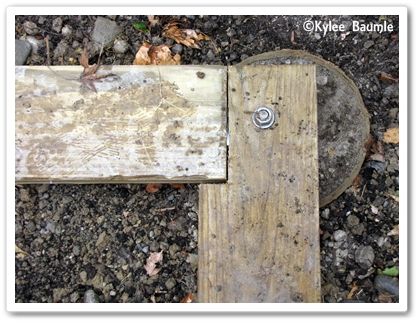 |
| Foundation pillar |
Conservatory or greenhouse? There are two ways to define them - structural and practical. A residential conservatory is constructed of wood and glass, and is usually attached to the home or another building. A greenhouse is nearly all glass or polycarbonate or some other "clear" material to allow as much light as possible to penetrate. That's the structural definition.
Practically speaking, a conservatory is a place for keeping plants that can't withstand the cold weather during winter. It's a place where one can go to just hang out among green plants and admire them. A greenhouse is a place where plants are propagated, whether by seed or other means - in other words, there's active work involved by the gardener to grow things.
Of course, there are structures that function in both ways. Our addition falls more on the conservatory side of things. While I may decide to do some early starting of seeds in the spring, the main purpose for this room is the housing of many tropicals and tender perennials. Prior to this, they were cared for in the basement of our house and not very well, I might add. The conservatory should allow them to avoid total dormancy and we can truly enjoy them year round.
The holes were dug with a gas-powered auger for the foundation pillars. No photos of that, because I had the camera with me. Dad said they dug down 30 inches and thought they'd hit rock. Nope, just dry clay. They broke through that finally, and went down another six inches. They had to put water in the hole to get the rest of the dirt out because it was so powder dry and wouldn't hold together enough to get the last of it out of the hole.
 |
| September 16, 2010 |
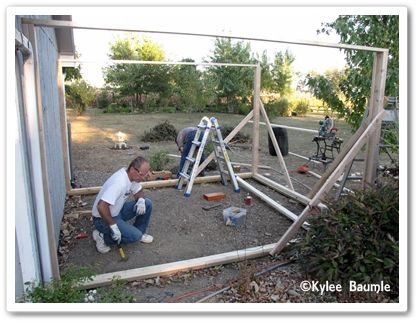 |
| September 17, 2010 |
 |
| September 19, 2010 |
 |
| September 19, 2010 |
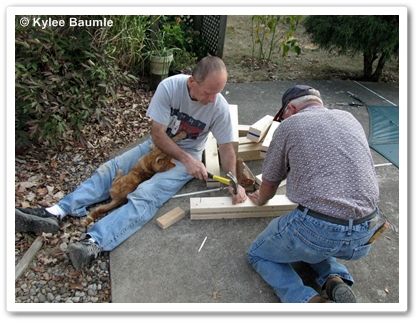 |
| Max the cat helped when he could. |
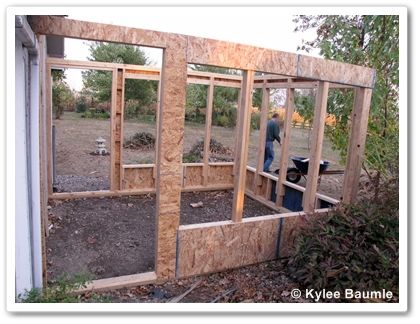 |
| September 28, 2010 |
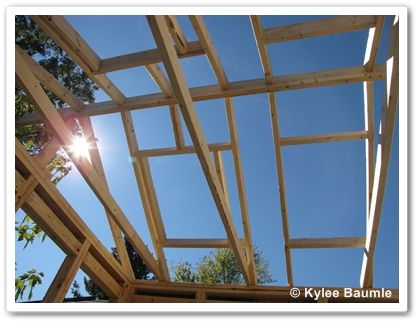 |
| October 5, 2010 |
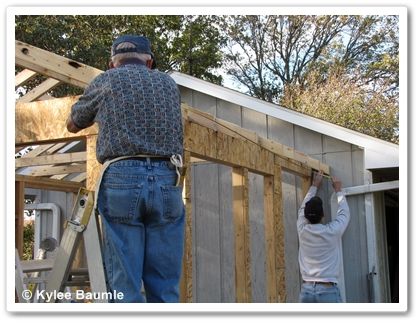 |
| October 5, 2010 |
 |
| October 6, 2010 |
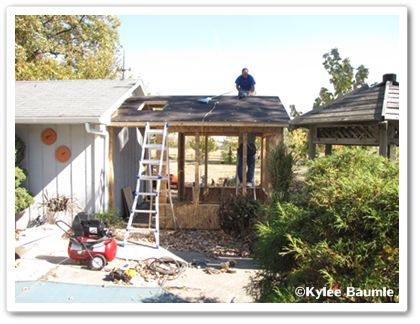 |
| October 9, 2010 |
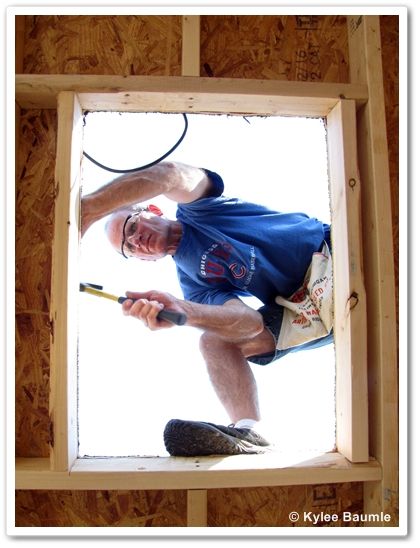 |
| October 10, 2010 |
 |
| October 10, 2010 |
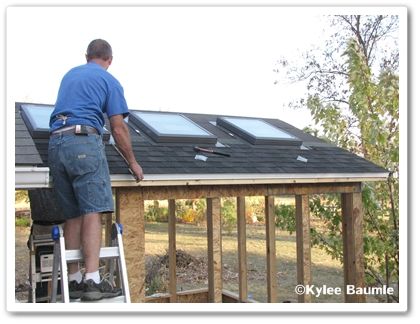 |
| October 10, 2010 |
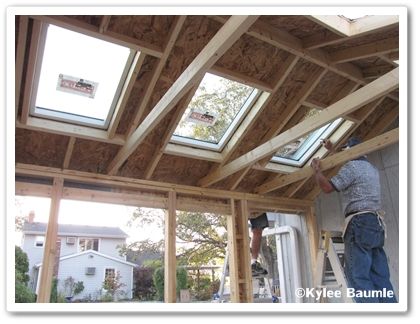 |
| October 10, 2010 |
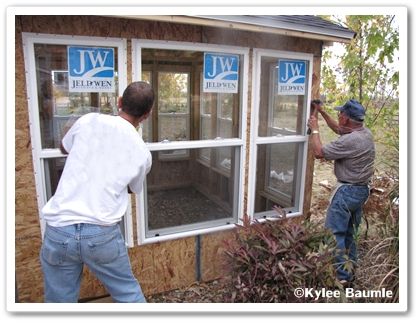 |
| October 13, 2010 |
 |
| October 16, 2010 |
Work continued on the outside while the weather held.
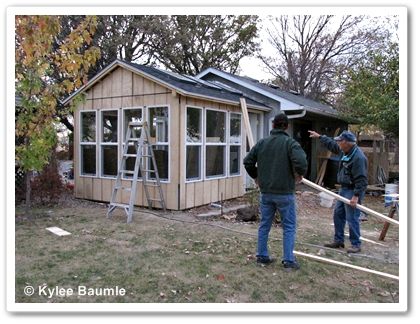 |
| October 18, 2010 |
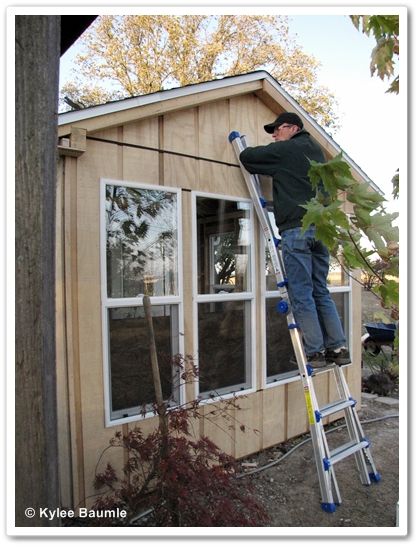 |
| October 20, 2010 |
 |
| October 21, 2010 |
The 120-gallon propane tank for heating was brought on October 22nd, but wouldn't be hooked up until a few weeks later.
Once the outside was pretty well finished, work began on the inside. November 3rd, the electricity was hooked up and turned on.
 |
| Dad trims styrofoam to put around the bottom for insulation. |
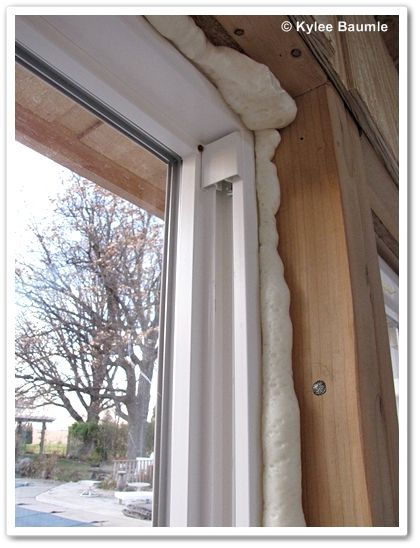 |
| Expanding foam insulation was put around the windows. |
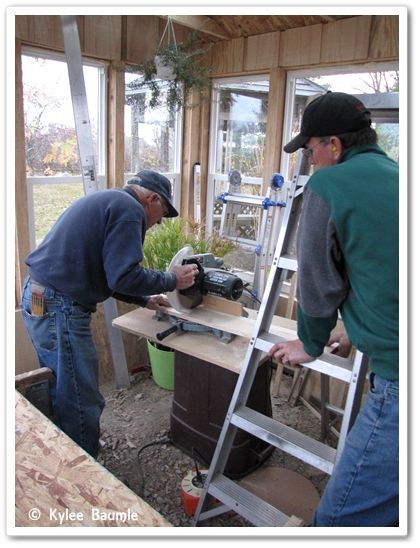 |
| Trimming out the windows. |
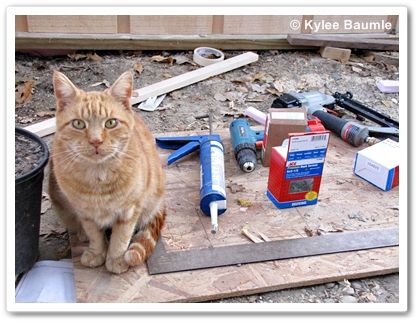 |
| The ever-present Max, who thinks we're building this as a house just for him, supervises all activity. |
 |
| November 6, 2010 - Thermostatically-controlled vent was installed. This will be used in the summer when solar heating raises the temperature inside to higher levels than we want. |
 |
| A ceiling fan was installed to help with air circulation. |
We started seriously investigating which propane heater to purchase - ventless or direct vent. We weighed all the pros and cons as found online in forums, on Twitter, and by seeking the advice of other greenhouse owners. I had a wonderful telephone conversation with Kari Lønning from Connecticut and we discussed the heater issue as well as other greenhouse topics.
We settled on the Empire DV 210, which is a direct vent propane heater. We wanted direct vent, due to the moisture issue. The ventless heaters we looked at all had moisture shut-offs, which we didn't want. We knew there would be a fair amount of moisture in the room from the plants, which we wanted, since plants generally love more humid conditions.
We consulted with Romie's brother, Jerry, whose business is plumbing and heating. His advice was invaluable and he spent quite a bit of time advising us as well as getting the heater for us and installing it. We purchased the optional blower, which is contained within the heater. The advantage of a propane heater like this is that it doesn't need electricity to operate (although the blower does). In case of a power outage, we'll still have heat.
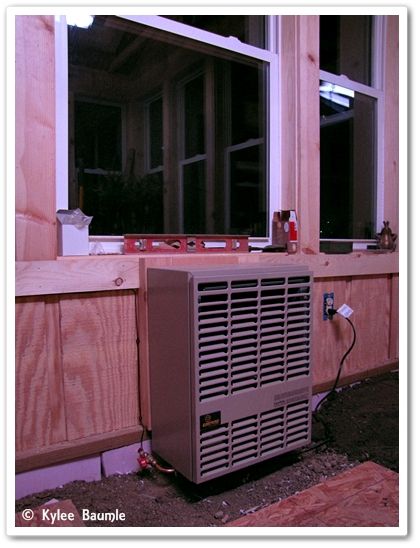
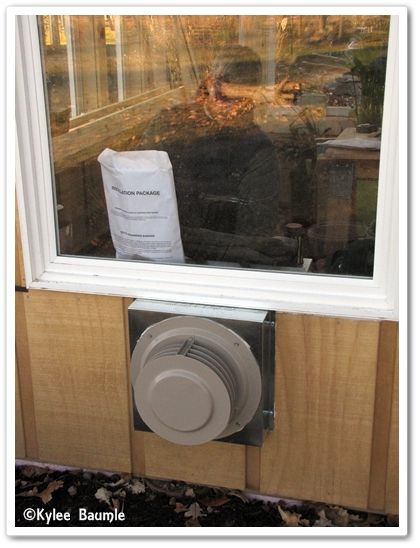
The heater installation was complete and working on November 15th.
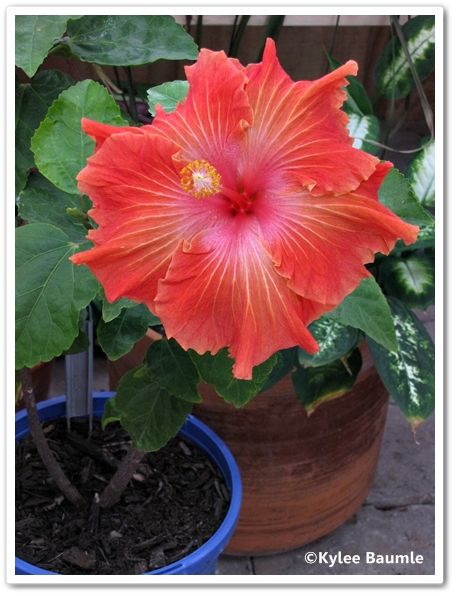 |
| Hibiscus rosa-sinensis 'Sun Showers', while still beautiful, lacks its characteristic yellow speckling because of low light levels for several weeks. |
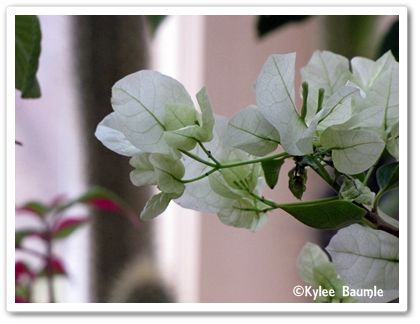 |
| Bougainvillea 'Imperial Garden' normally has bracts of hot pink with white edging, but due to the lack of light, they emerged all-white. |
Six-by-nine-inch cobblestone pavers were then laid in, and sand brushed over them to fill in the cracks. This makes for a nice, neat floor that's also permeable so I don't have to be concerned with water issues when watering. This was always an issue when I kept the plants in the basement.
These pavers were what I'd wanted but thought they might be too expensive. They ended up being the least costly of all stone-type flooring, because we got them on clearance at Lowe's for 99 cents each. They came in 6" x 6" and 3" by 6" sizes, too, at similar savings. We used these on the sides and ends, and very little cutting had to be done.
Once the floor was done, the next step was to make the benches that would hold the plants. Dad and Romie constructed them of 2x4s and Rubbermaid epoxy-coated steel closet shelving. We purchased the 20" deep shelving in brown, in 8-foot lengths. Romie cut them to the length we needed with his saber saw.
We used them upside down so the lip would stick up in back rather than down in front (as used for closet shelving), so it would prevent pots from sliding off the back of the shelves.
Though we wanted to paint everything before putting the plants in, the weather prevented us from doing that. The painting, inside and out, will be done in the spring. With very cold temperatures looming, the conservatory and the benches were finished on Saturday, November 20th and the entire afternoon of Sunday, November 21st was spent moving plants in before the cold weather arrived on Monday.
No sooner did we get everything in, when the Brugmansia burst into bloom and for two weeks its lovely gently soapy fragrance permeated the night air.
Both Romie and I sit in chairs out there at day's end, and while the weather outside is cold and rainy or snowy, we enjoy the lush greenery all around us. Usually, we let a cat or two in with us, and they curl up on our laps. They like it in there, too.
The temperature is kept at 60° F or above. On sunny days, it's gotten as warm as 73°. Of course, the propane heater doesn't operate then. We have a wireless thermometer with a sensor in the greenhouse and the main readout unit in the house so we can tell from the house what the temperature in the greenhouse is without having to go out there to check it. We want to get one that has an alarm that will alert us in the house when the temperature drops below a set level.
Thank you just doesn't even begin to show the appreciation I have for my Dad and my husband for making this dream come true. Mom, too, since she was the one that first broached the subject. I truly love my gardens and my flowers, which everyone who knows me is aware of. This sign in the greenhouse, in a simple way, says it all...











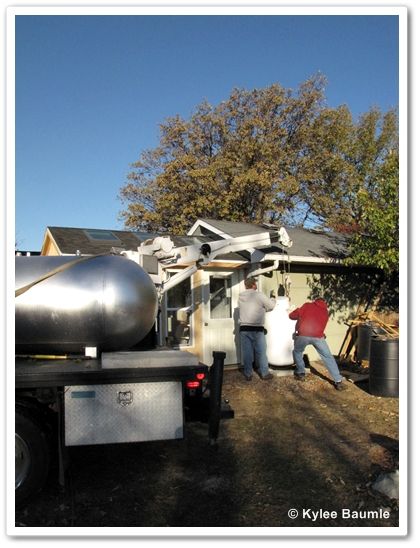
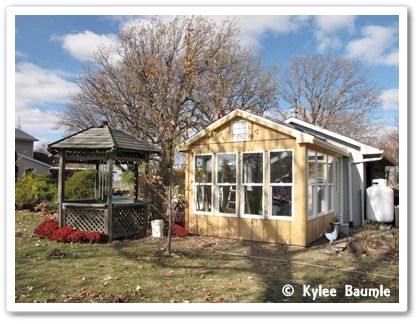
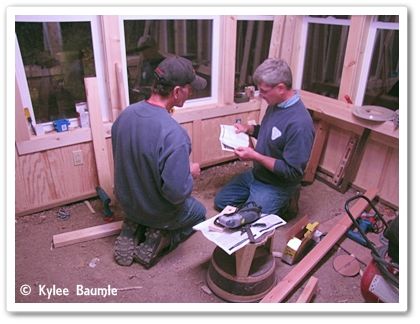

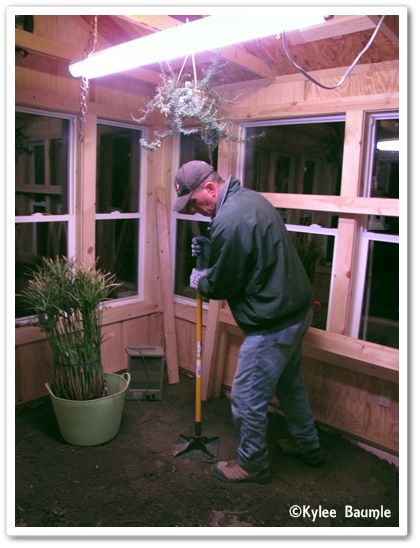

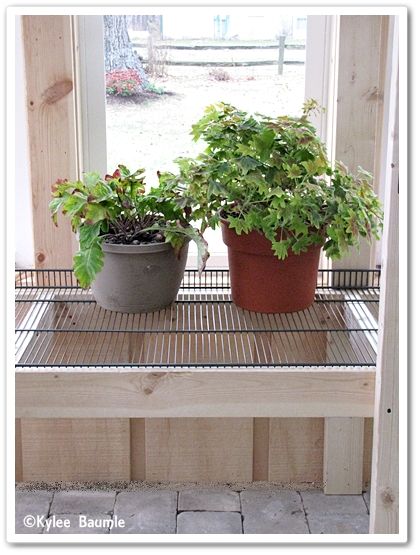


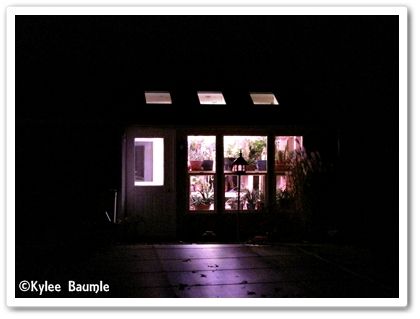







 "Bejeweled"
"Bejeweled"


